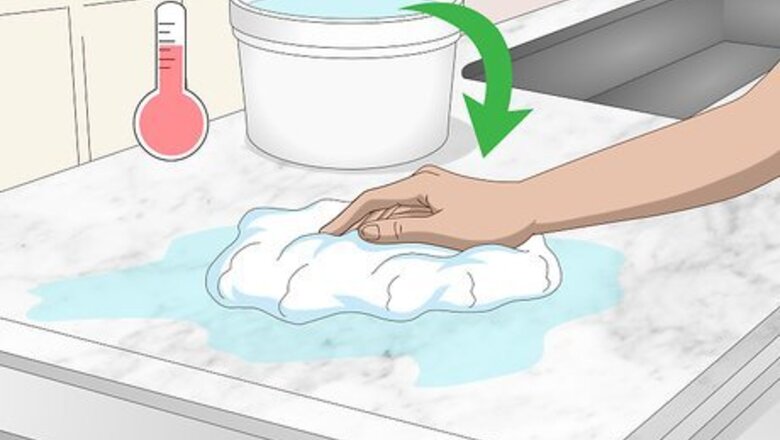
views
Doing General Cleaning and Polishing

Wipe marble surfaces with a wet cloth. Use only warm tap water, as many household cleaners are too harsh for marble counters. Wipe the length of the counter with a wet cloth. Microfiber cloths are best for this if you have them, they’ll give the counter a better scrub without needing to use a household cleaner. If you need to clean your counter more thoroughly, you can use commercial cleaners specifically designed for marble. For marble floors, passing a dust mop on the surface regularly should be enough for regular cleaning. However, if the floor is dirty and requires some extra cleaning, add a couple of drops of dish soap to a bucket of water and use a microfiber head mop to clean the floor with this solution. Dry the floor thoroughly after cleaning it. This kind of cleaning should be done daily to clear crumbs or any dust that may have accumulated on the counter, it won’t clean serious stains.

Wipe countertops dry with a separate cloth. Don’t let the marble just air dry, since marble is easily marked by water spots. Use a microfiber cloth to wipe countertops until they’re dry.
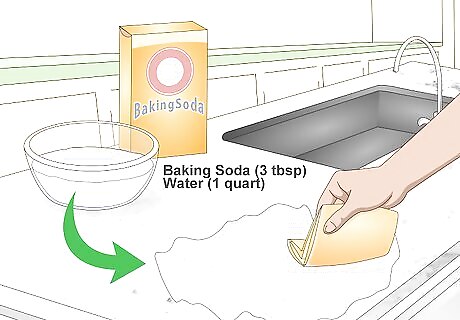
Spread a baking soda mixture over the marble polish it. Mix three tablespoons (44ml) of baking soda with one quart (946ml) of water. Use a shammy to spread this mixture over your marble surface. Let the mixture sit on your marble for a few hours before wiping it away with a wet cloth.

Sprinkle crushed chalk over your marble to polish it further. For best results, you’ll want to use a box of white chalk and use a mortar and pestle to crush it into fine dust. Use a shammy to wipe the counter in circles, buffing it and bringing out the shine. Wipe the chalk dust away with a dry cloth after buffing it.
Removing Stains with a Poultice
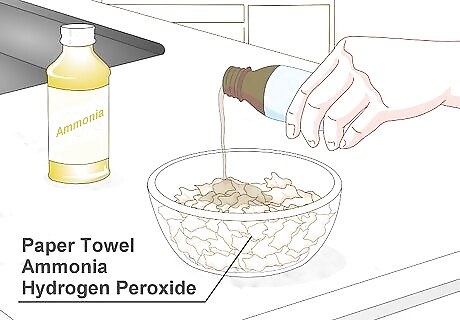
Mix paper towel pieces, ammonia, and hydrogen peroxide in a bowl. Rip up a couple sheets of paper towels and place them in a bowl. Note that the amount of paper towel you use depends on the size of the stain you’re trying to remove. Pour a few drops of ammonia in the bowl, and enough hydrogen peroxide to completely soak the paper towel chunks. When handling ammonia, you should wear gloves to avoid skin irritation and burns. If the stain you’re trying to remove is quite large, you may want to fold up a paper towel instead. Attempt this method if you’re dealing with old or tenacious stains that can’t be removed with more conventional means.
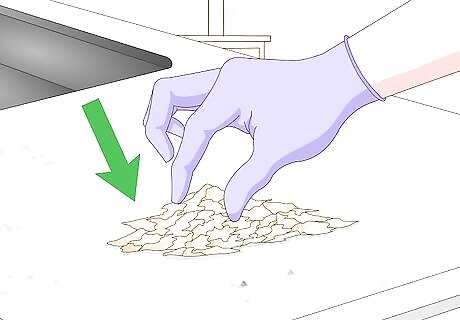
Place the paper towel poultice over the stain. Pick the saturated chunks out of the bowl and place them over the stain. Be careful not to apply too much pressure, or the hydrogen peroxide and ammonia might leak out over your marble. If you’re dealing with a vertical surface, the paper towel chunks should be wet enough to just stick on.
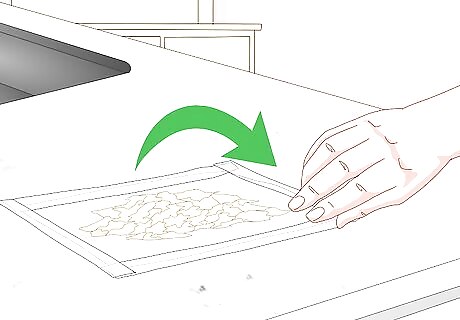
Seal the poultice with plastic wrap. Stretch a length of plastic wrap over the poultice and stain. Apply pressure to its sides, so that it completely seals the poultice, then use clear adhesive tape to secure the plastic wrap. Use a toothpick to poke a couple of holes in the plastic wrap to allow airflow. Let the poultice sit for two to three days.

Remove the plastic wrap and wash the area with warm water. You should be able to lift the plastic wrap easily with just your fingers. Pick the paper towel poultice off of your surface and throw the chunks away. Then, dampen a cloth with warm water and wipe the area clean. After washing the marble, use a dry cloth or paper towel to dry the area.
Maintaining Marble Surfaces
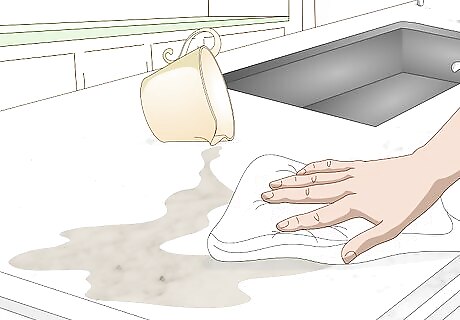
Wipe away spills quickly. Marble is a sensitive, porous surface, and spilled liquids can stain or etch these surfaces. Acidic substances like coffee, juice, wine or toiletries are especially damaging to marble. Use a microfiber cloth or paper towels to mop up and wipe spills as soon as they happen.
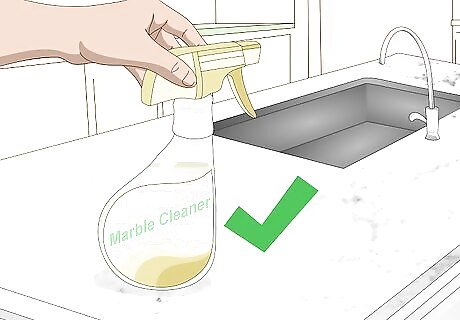
Choose your cleaners carefully. Even general purpose cleaners can damage marble surfaces, especially if they contain acids or alkalis. If you’re going to apply a cleaner directly to your marble countertop or floors, make sure it’s specially formulated to clean marble.

Use coasters and cutting boards on marble countertops. Condensation rings on marble countertops can etch and stain the surface, so make sure to place coasters under any glass placed on them. When cutting fruits and vegetables, cutting boards will prevent any acids or juices from staining the countertop.



















Comments
0 comment